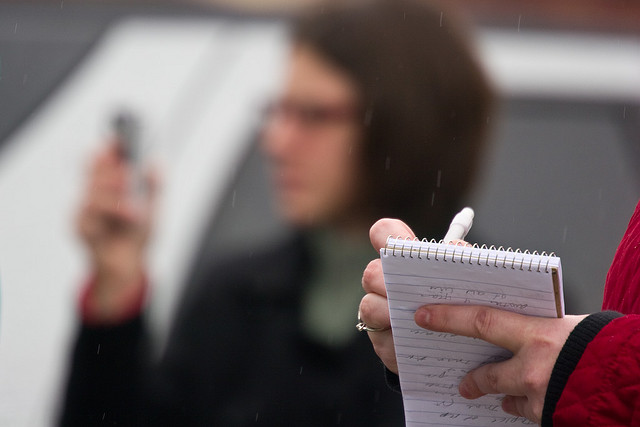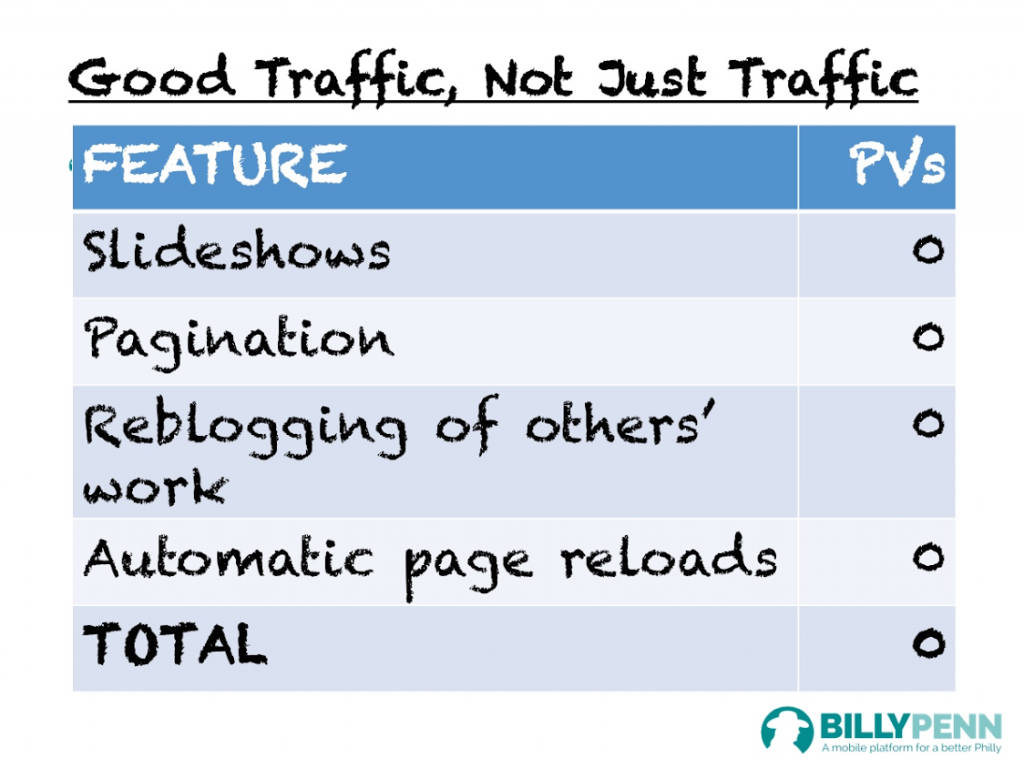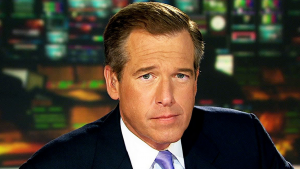(This post began as an email to Megan Garber of the Atlantic, who was writing about “hot takes.” She published some of what I told her.)
I can’t speak for other press systems, but in American journalism there is thought to be a uniquely potent source of virtue, the mythical term for which is “shoe leather reporting.” There can never be enough of it. Only good derives from it. Anything that eclipses it is bad. Anything that eludes it is suspect. Anything that permits more of it is holy.
Good Old Fashioned Shoe Leather Reporting is one of a very few gods an American journalist can officially pray to. Fine writing, great storytelling, aggressive questioning, toughness in the face of denials and attacks: these are universally admired. Amusing and inventive word play, quick and biting sarcasm, superior crap detection: these will win you points in any newsroom or press bus. Freedom of the press, and the free flow of information: these are sacred, of course.
But there’s a unique glow around shoe leather reporting, which is often described as “basic” (because everything else is based on it) or as “traditional” (because the importance of it never changes) or as “original” reporting (because it is the origin of all things good in journalism.) 
Here’s William Bastone, co-founder of the Smoking Gun website and a reporter by trade, describing what the staff does: “The reporting for the site hasn’t changed. I don’t think it ever will. It’s basic shoe leather reporting, hunting down sources and documents and confirming authenticity. That’s always been our thing.”
It’s called “shoe leather” reporting because in its classic form, the journalist is literally on foot, walking from office to office, source to source, conducting interviews, pulling documents, hunting down facts no one else has confirmed yet. So much walking is required to break a big story that the soles of the shoes grind down. Want respect, young journalist? Break some big stories. How is it done? Same way it’s always been done: Shoe leather reporting.
Here’s Tom Friedman of the New York Times talking about one of his mentors in journalism and giving us that old time religion:
Leon taught me that whether you’re writing news, opinion or analysis, if it isn’t based on shoe-leather reporting, it isn’t worth a bucket of beans.
To this day, whenever I hear a reporter say, “I don’t do reporting — I just do opinion and analysis,” I always think of the reporting basics that Leon pounded into me and want to say, “I doubt that your analysis is very good, because the best analysis always comes from spotting trends that can usually only be spotted by reporting a story day in and day out.” I like blogs, but the only bloggers who appeal to me are those who do reporting and aren’t just sitting at home in their pajamas firing off digital mortars.
Notice how there are different forms worth mastering — news, opinion, “analysis,” even blogging — but a single virtue creates value.
In this text I found, which is actually called Good old-fashioned shoe-leather reporting, editors at the AP are giving an award to one of their reporters. “Denver’s Ivan Moreno started pursuing the issue of voter fraud in Colorado after nearly 4,000 voters received letters from the secretary of state challenging their citizenship and, therefore, their right to cast ballots.”
He pressed state government for the names. The more he asked, the smaller the number of fraud cases got, shrinking “from 4,000 to 1,400 to just 141 – and Moreno was the first to report that the authenticity of only 141 voters was being challenged.” He finally got the state to cough up 35 names of people it accused of trying to vote fraudulently. “Moreno called every one he could find, confirming independently that they were citizens.” Then he broke the story:
All of Moreno’s reporting came together in a comprehensive piece that looked at the efforts of Republican officials to purge voter rolls in Colorado and other states. In each case, officials found almost no voter fraud, despite heavily publicized investigations and the use of a federal immigration database. It was the first national look at GOP efforts to attribute voter fraud to non-citizens in key election states.
The lesson: “Investigative stories often stem from Freedom of Information requests. But, just as often, it’s from good old-fashioned shoe-leather reporting.”
The scenes in All the President’s Men that show Woodward and Bernstein crisscrossing Washington on foot or ringing doorbells at night: they are shoe leather mythology in its most concentrated form. Making calls is good, but one stepped removed from what is most holy. (Get out of the office!) Reporting on the internet is okay, but one step removed from making calls. (Pick up the phone, damnit!) Aggregating stuff is lame. Reading and thinking about what you read, then writing about it: highly suspect. But it is virtuous to show contempt for that.
Some common terms for this contempt: navel gazing, thumb sucker. (Infantalism, narcissism.) The term “hot takes” participates in this. Hot takes are a joke, the lowest possible form, a professional embarrassment, because “these swift, provocative, and socially shareable reaction posts” are at the furthest remove from shoe leather reporting and often parasitic upon it, as bloggers were said to be parasitic back when it was important to say they weren’t journalists.
As a source of virtue in journalism shoe leather has such high status that it’s hard to generate respect for other skills and disciplines, even when they deserve it. We see this especially with news anchors in broadcast journalism. They’re always emphasizing that, though they have an important-sounding title — “anchor” of the program, or even managing editor — they are really just reporters at heart. (Dan Rather after he retired. “I’m just a reporter who got lucky.”) Being an anchor can make you rich, famous and vital to the company’s bottom line, but it cannot make you virtuous as a journalist. Thus:
“He was always a wire service reporter in his heart,” said Sanford Socolow, a former executive producer for Mr. Cronkite. “He always lived by the wire service adage,” which he described as “Get it first, but get it right.”
Last week John Dickerson was named the new anchor for CBS’s Sunday talk show, Face the Nation. Here’s how CBS News announced it:
“John is first and foremost a reporter–and that’s what he’ll be as anchor of Face the Nation,” said CBS News President David Rhodes. “His work in the studio will always be informed by what he’s learned in Iowa, in New Hampshire, on Capitol Hill–anywhere there’s news. He has earned the respect of newsmakers across the political spectrum. With all our correspondents John will present comprehensive coverage on all our platforms.”
See what I mean? You don’t say of your new anchor, “He will be a great anchor!” You don’t even refer to any skills he will need in that role. You describe him as a great reporter, because that’s what a good anchor really is, anyway. It was the potency of this myth that got Brian Williams into such trouble in 2015. He tried to jack up his boots-on-the-ground reporting cred to win the admiration he craved. But he got caught.
It’s true that reading news off the teleprompter is not much of a talent. But that’s not true of anchoring live coverage when big news breaks. And it’s not true of interviewing powerful people on live TV. These are demanding disciplines. They are deeply journalistic. As Tina Brown once wrote in the Washington Post: “When Peter Jennings is anchoring a breaking news story for ABC, he’s a human hyperlink to the world, seemingly able to absorb and process information through the cheeks of his behind.”
Of all things journalists do, on-the-ground reporting is, I think, the most important. I would not quarrel with that. It fully deserves the esteem in which it is held. “Want respect? Break some big stories” is very sound advice. However, it is not true that a single virtue creates value in journalism. Efficiency creates value too. Contributions from elsewhere — synthesizing known facts, explaining complex issues, putting dots together, reviewing, fact checking, writing about the public world beautifully, anchoring a live broadcast, asking questions that are of moment — are just as basic to good journalism as good old fashioned shoe leather reporting.
What these forms lack in mystique they make up for in simple utility.
After Matter: Notes, Reactions & Links
Steve Buttry responds to this post with some detailed testimony from his career as a reporter and editor. He shows that shoe leather reporting was sometimes crucial to getting the story and sometimes other methods succeeded where “shoe leather” would not have. He writes:
Nearly all the best stories of my career came in whole or part because I was out of the office, interviewing people face-to-face, digging through courthouse records, seeing disaster damage myself, showing empathy in a way that persuaded people to trust me with their intimate stories, seeing important details in the setting where the story took place.
I believe in the importance of shoe leather.
But I also know that shoe leather is just one of many paths to a good story.
Read the rest. It’s valuable.
Journalism scholar Chris Anderson:
@jayrosen_nyu @stevebuttry Anthropologist Dominic Boyer argues that “screen work” actually dominates journalism now https://t.co/NHERISfjN9
— Chanders (@Chanders) April 20, 2015
That screen works dominates in practice could be the reason why shoe leather dominates in mythology.
From the Pulitzer Prize nominations:
Photo credit: Roger H. Goun. Creative Commons license.




